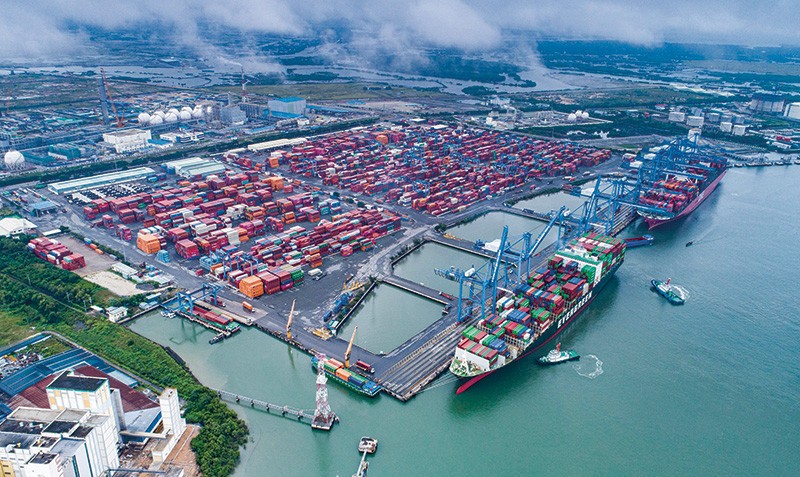 |
| Tan Cang - Cai Mep port cluster is Vietnam's first deep-water port in the Cai Mep - Thi Vai area. (Photo: VNA) |
As logistics plays a crucial role in the country’s socioeconomic development, it is necessary to seek institution, mechanisms and policies to boost the sector’s growth in association with the national transformation process, they said at a recent logistic forum held in the Mekong Delta city of Can Tho.
According to the Vietnam Logistics Service Business Association, the average logistics cost in Vietnam is 16.8 – 17%, still higher than the global average of 10.6%. Reasons include limited logistics capacity, poor infrastructure and lack of connectivity between modes of transportation.
Vietnam dropped four places in the World Bank (WB) Logistics Performance Index (LPI) 2023 to the 43rd position from the 39th position in 2018.
The WB report also showed that, in addition to improvements in infrastructure, customs and international shipping factors, Vietnam's logistics industry still has many limitations in terms of capacity as well as the digital transformation pace of most logistics businesses.
Deputy Minister of Industry and Trade Phan Thi Thang said that Vietnam is in the top 10 emerging logistics markets globally, with a compound annual growth rate of the industry forecast to reach 5.5% in the 2022-2027 period. In the first 10 months of this year, the country’s total import-export turnover hit 558.33 billion USD with a record trade surplus of 24.59 billion USD.
The official stressed the need to remove difficulties and optimise benefits that digital transformation bring about for the industry. The move would enhance the sector’s competitiveness and boost socioeconomic development of the Mekong Delta, a region with great potential and demand for logistics services but with modest logistics infrastructure and capacity.
Le Quang Trung, Vice Chairman of the Vietnam Logistics Service Business Association said that the biggest bottleneck hindering the Mekong Delta region’s growth is the high logistics cost, which accounts for 30% of the production cost. The association said that currently, the region has 1,461 logistic service providers, accounting for 4.39% of the country’s total logistics business number, mostly serving the agricultural sector, he added.
Trung underlined that localities and regions should improve their logistics infrastructure system, including warehouse and transport infrastructure, towards specialisation of stages.
At the same time, it is necessary to strengthen multimodal transport and develop air cargo air transport services, while investing in smart warehouse and preservation technology, he stated.
In addition, provinces, cities, and businesses need to take advantage of orientations and policies on regional connectivity to create substantive connections in terms of goods supply sources and logistics activities.
The Vietnam Logistics Service Business Association representative proposed the opening of an additional waterway transport routes connecting the Mekong Delta region with Cambodia and the Cai Mep-Thi Vai area. The new channel will create advantages for the direct import-export of key products such as seafood and farm produce to Europe and the US.

























